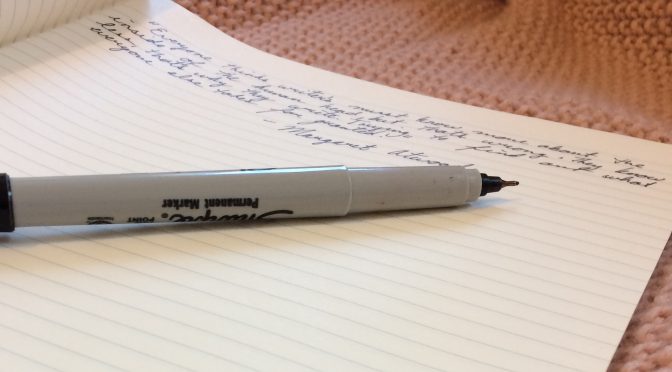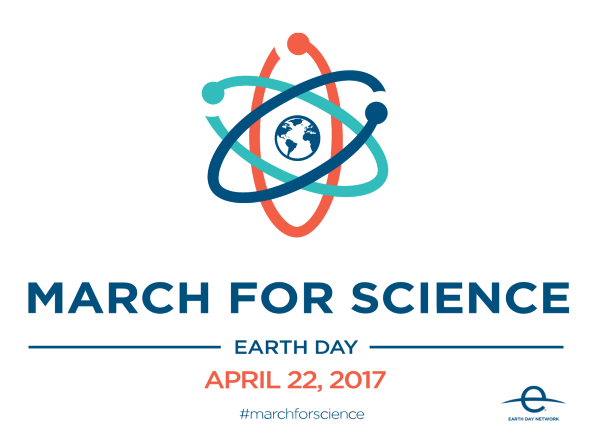Scientists don’t often think of themselves as writers. Our employment responsibilities do not include crafting characters or building worlds from words, nor investigating the latest political scandal, nor travelling the globe and composing reflections on our experiences. Yet, we do write: grants, reports, manuscripts. It is how we distribute our knowledge and the science we have done, because graphs and images and data have little impact if not shared. We write and revise as much as any journalist or novelist; still, writer isn’t an identity most scientists would primarily claim.
We are, though. Scientists are writers. Scientists are storytellers. Each graduate student, post-doc, faculty member has a story they are telling through their science. The scale and impact differs, but the fact remains: we must spin a tale convincing enough for our science to be funded, to be published, to matter. We are writers, and we don’t even realize it.
I was trained to be a writer in the classical sense, specifically fiction writing. There were certain lessons that we learned over and over again, because they were fundamental to crafting even the most basic story. What fascinates me is that I have encountered these components informally in my graduate school training, just in the guise of doing good science.
We use basic story structure in writing articles: our beginnings ask a question, which we then try to answer in the middle, and our ends show how we have changed our little corner of the science world with our answer. There may even be a cliffhanger in there–alluding to a sequel coming soon to a journal near you!–if we’ve created even more questions with our answer. Grant writing uses a similar structure, with more emphasis on the cliffhanger. Leaving your reader on the edge of his seat, wondering what could come next, is something both scientists and fiction writers want (equally for the validation of having intrigued your audience and the satisfaction that such engagement often results in financial investment).
Show, don’t tell. Rather than telling a reader that a character is angry or sad, a writer should describe the character’s balled-up fists or tear-stained cheeks. For scientists, our equivalent of ‘telling’ is ‘data not shown’–and we all know how much we should avoid that. We do our showing in our figures. A scientist knows that the more data you can include, all the better. A scientist also knows that the more visually appealing your data is, the better it represents your conclusions. No one likes to read tables, right? Those data become so much more interesting as a pie chart, a graph, or a schematic. We show as much as we can, and tell as little as possible, because the best case scenario is when the data speaks for itself, instead of the scientist speaking for it.
Stories are much more interesting when they start in media res, or in the middle: no boring leadup, no extensive exposition. It is why publications often start with describing a hit or two they discovered from a screen, instead of the million little steps that led up to and happened during the screen itself. Good papers do that, and so does good fiction. The first Harry Potter book does not walk the reader through Harry’s childhood; it just starts right at the moment his life is about to change. Relevancy and immediacy are key components to telling any story, and scientists know and practice these principles to the best of their ability.
Crafting things out of thin air to make a story is a staple of fiction, but we know that as data fraud in the science world. The ‘characters’ in our scientific writing, the ‘plot’, the ‘setting’, the ‘rising action’, the ‘falling action’, all of those things have to be based on facts and evidence, on carefully planned and painstakingly executed experiments. They are based on reality. We know this; every scientist knows this. What we as scientists may not realize, however, is the extent to which fiction writing is also rooted in reality. Creating characters or worlds out of thin air is in actuality rarely done. The foundation of so many characters–ordinary or fantastical–come from experiences and observations within the writer’s own realm. It is a different way of collecting and representing evidence, a different way of asking or answering a question about the world. This reality-turned-fiction is one of the best ways a novel writer can build a sense of believability even in the most far-fetched fiction. It also builds trust between author and reader, one of the most important–and difficult–parts of fiction writing. Scientists have these components within their works as well, though constructed and strengthened in a different manner. Trust in science is built through executing proper and thorough controls, validating via different experimental methods, and considering (and hopefully, systematically eliminating) alternate theories or explanations. So regardless of the method in which they are built, that believability and that trust are critical components to any story, be it science or fiction.
Fiction writing, creative nonfiction writing, journalistic writing are all still very different beasts than scientific writing. Still, it would benefit scientists to focus less on the differences and more on where our often polarized fields actually do intersect. So much of our work is to provide convincing answers to difficult questions, and that type of evidence-based persuasion can be drastically more powerful if we use the same tools that traditional writers do. Scientists need to learn these tools as undergraduate and graduate students through formalized, structured, specified, and required coursework. That training will carry us, and our work, miles farther in graduate school and in our careers beyond. We need to be trained as writers, maybe as much as we are trained as scientists. Communicating our work in a persuasive and captivating manner is more important the ever, given the disturbing loss of faith in evidence-based arguments. We, as scientists, need to win that trust back, and to do so, we better be able to tell one hell of a story–to our funding institutions, to our public–about our science. For science to progress, we need our stories to be loud, to be spellbinding, to be believed and trusted by the public. We need to be writers, otherwise we might one day read a story about science that starts with once upon a time…






